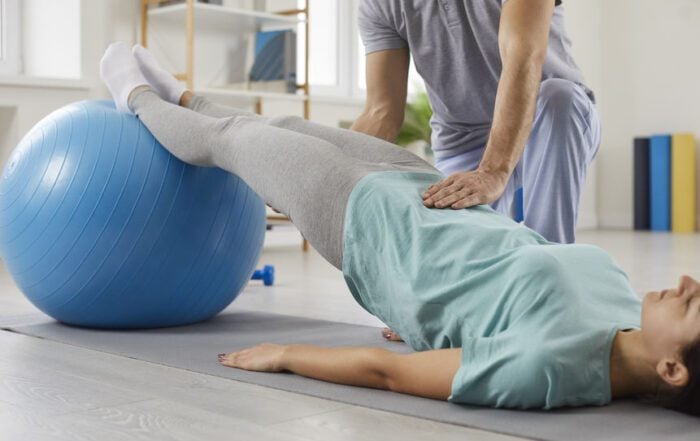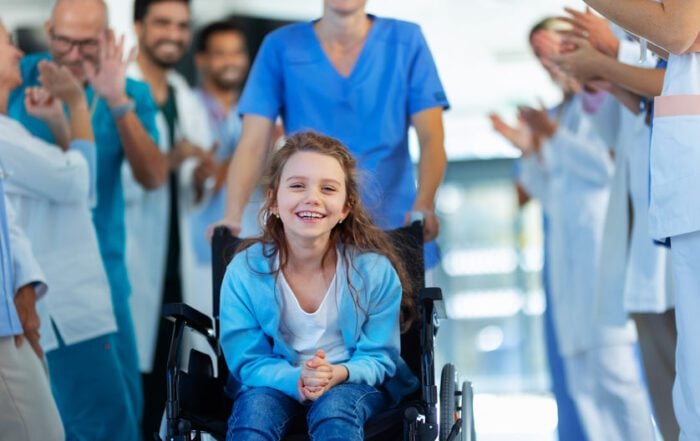ACL Injuries And Women
The knee is an essential joint for movement, especially in sports. However, constant running, jumping, and changes in direction can open the door for knee injuries. An anterior cruciate ligament (ACL) tear is the most common and severe knee injury an athlete can experience, requiring several months of recovery. On average, about 200,000 athletes suffer ACL tears yearly. Yet, statistics show that women are up to 8 times more likely to experience ACL tears. Why are the numbers skewed toward women, and can anything be done to reduce the risk? Understanding the risk factors and treatment options can help women play sports safer.

All about ACL tears
The ACL is a ligament in the knee that connects the thigh and shin bones. This ligament forms an X with the posterior cruciate ligament (PCL) to stabilize the knee. A sudden blow, twist, or unnatural movement can cause the ACL to stretch or tear completely. ACL tears lead to pain, swelling, and instability. Some athletes report hearing a popping sound followed by a painful sensation in the knee. The injury restricts running, lateral movement, and jumping. Athletes who play contact sports, like soccer, basketball, and football, are more likely to suffer ACL tears. If left untreated, the knee becomes unstable, and the athlete cannot perform at a high level.
A higher risk for women
There are twice as many male athletes as female athletes. However, women are several times more likely to experience ACL tears than men. The anatomical differences between male and female bodies play a significant role in ACL injuries. Some women tend to have wider hips, resulting in a greater angle of the femur meeting the tibia, known as the Q angle. This may cause more stress on the knee in contact sports, increasing the chances of ACL tears. Some studies argue that hormone changes in women, such as estrogen spikes, may impact ligament laxity, increasing the risk. Other factors may include neuromuscular imbalances, different landing mechanics when running, and weaker hamstring muscles. These differences do not guarantee injury but may be the underlying causes when performing at a high level.
The power of minimally invasive repair
An ACL tear can be devastating both physically and emotionally. Many athletes are eager to perform and enjoy sports but know that this injury means a long recovery is ahead. However, thanks to minimally invasive surgery (MIS), men and women can return to sports faster. The surgery uses small incisions to access the knee. An arthroscope allows the surgeon to view the damaged ligament. Additional surgical devices remove the torn ligament and install a new graft, securing the replacement to the bone. MIS means the patient can leave the hospital on the same day, experience faster healing, and start physical therapy (PT) sooner. On average, ACL recovery can take at least 6 months, especially if the athlete wants to return to sport, but MIS can shorten that timeline.
Can women prevent ACL tears?
Statistics show that women are at higher risk of experiencing an ACL tear, but there are some possible steps to lower the risk. Training programs focused on improving movement patterns and emphasizing proper landing techniques can help. Specific drills can improve body awareness and modify the mechanics that lead to ACL injuries. From an early age, women athletes should consider physical tests that look for neuromuscular imbalances or poor muscle activation. Then, a targeted exercise plan that improves hamstring strength and enhances joint stability can make a difference. While these actions cannot guarantee ACL injury prevention, the risks can decrease significantly.
Empowering women's safety in sports
Anterior cruciate ligament tears are a severe knee injury capable of sidelining athletes for several months. Women, in particular, are at higher risk. Should an ACL tear occur, MIS is the gold standard for ACL reconstruction. However, as the saying goes, prevention is better than cure. Women should be supported and empowered to play sports without the concern of inevitable injuries. Focusing on the right exercise and knowledge can reduce the overall risk significantly.
Recent Posts
What To Do About Hip Pain: Is It Time To See An Orthopedic Surgeon About Labral Repair?
Hip pain should not be overlooked, as the issue could be a labral tear. Symptoms like pain and instability require an orthopedic surgeon’s assessment.
ACL Repair: Will You Have Range Of Motion With Your Knee After Recovery & Physical Therapy?
After an ACL injury, ROM can be negatively affected. ACL repair surgery helps restore function, but physical therapy is essential to ROM.
Arthroscopy: What Are The Benefits Of This Minimally Invasive Outpatient Orthopedic Procedure?
Arthroscopy can help diagnose or treat joint conditions. Benefits of the MIS include faster recovery, less pain, and fewer scars.
Posterior Interbody Lumbar Fusion: What Are The Benefits Of PLIF For People With Back Pain?
People with chronic back pain may benefit from posterior interbody lumbar fusion surgery. PLIF can reduce pain and improve stability.








